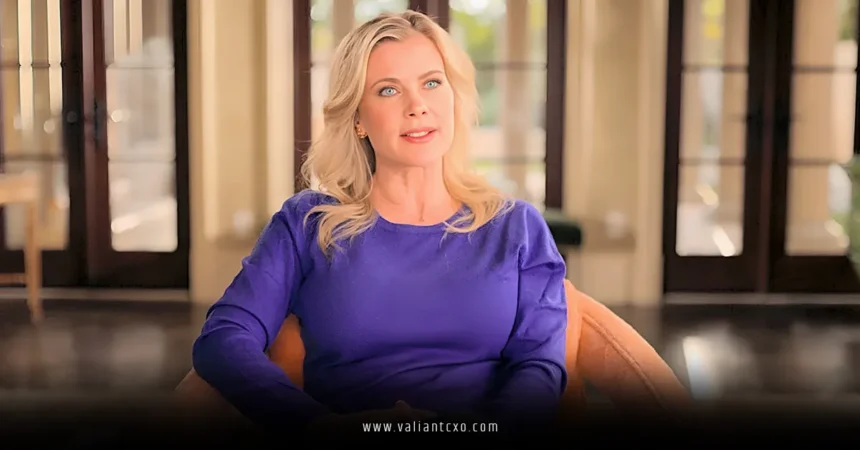The Biggest Loser burst onto television screens in 2004, captivating audiences with its raw emotion, dramatic transformations, and intense competition. This reality TV show wasn’t just about shedding pounds—it was about changing lives, rewriting personal stories, and tackling the complex, often emotional, journey of weight loss. But what made The Biggest Loser such a cultural phenomenon? Why did millions tune in to watch everyday people push their limits? And what can we learn from its highs, lows, and lasting legacy? Let’s unpack the show’s journey, its impact on contestants and viewers, and the broader conversation it sparked about health, wellness, and self-worth.
What Is The Biggest Loser?
At its core, The Biggest Loser is a reality TV competition where contestants, often struggling with obesity, compete to lose the highest percentage of body weight for a cash prize. The show, which aired on NBC and later USA Network, combined grueling workouts, strict diets, and emotional storytelling to create a compelling narrative. Contestants lived on a ranch, trained by world-class fitness experts like Bob Harper and Jillian Michaels, and faced weekly weigh-ins that determined who stayed and who went home. The Biggest Loser wasn’t just a game—it was a pressure cooker of physical and emotional transformation.
The show’s format was simple but gripping. Contestants were split into teams, each led by a trainer who pushed them through intense workouts and offered nutritional guidance. Weekly challenges added drama, testing physical endurance and mental grit. The weigh-ins, often nail-biting, were the heart of the show, where numbers on the scale could mean triumph or elimination. Over 17 seasons, The Biggest Loser evolved, introducing new trainers, themes, and twists, but its core mission remained: to inspire life-changing weight loss.
The Cultural Impact of The Biggest Loser
Why did The Biggest Loser resonate so deeply? For one, it tapped into a universal struggle. Obesity rates in the U.S. have climbed steadily, with the CDC reporting that over 40% of adults are obese. The show gave a face to this epidemic, showcasing real people with relatable stories—moms, dads, teachers, and workers who wanted to reclaim their health. Viewers saw themselves in the contestants, cheering their victories and crying over their setbacks.
The Biggest Loser also sparked a national conversation about health. It brought terms like “calorie deficit” and “metabolic rate” into living rooms, making complex concepts accessible. Suddenly, people were talking about portion control, exercise routines, and the emotional triggers behind overeating. The show inspired countless viewers to hit the gym, try new diets, or seek professional help. But it wasn’t without controversy—critics argued it glorified extreme weight loss and set unrealistic expectations. Still, its influence on fitness culture is undeniable.
Inspiring Personal Transformations
The Biggest Loser didn’t just change contestants—it motivated millions. Stories of participants losing 100, 200, or even 300 pounds were jaw-dropping. Take Season 8’s Danny Cahill, who dropped 239 pounds, or Season 11’s Olivia Ward, who transformed her life and inspired others. These success stories weren’t just about numbers; they were about newfound confidence, better health, and breaking free from old habits. Who wouldn’t be moved by a single mom running her first 5K or a dad playing with his kids without gasping for breath?
The show’s trainers became household names, too. Jillian Michaels, with her tough-love approach, and Bob Harper, with his empathetic coaching, showed that transformation required both discipline and heart. Their methods, while intense, resonated with viewers who wanted a no-nonsense push. The Biggest Loser workouts, like circuit training and HIIT, became mainstream, and spin-off products like DVDs and books flew off shelves.
The Dark Side of The Biggest Loser
But The Biggest Loser wasn’t all sunshine and sweat. Critics pointed to its darker side: the pressure to lose weight rapidly could lead to unhealthy practices. Contestants often faced grueling exercise regimens—sometimes 4-6 hours daily—paired with calorie-restricted diets. A 2016 study found that many participants regained weight post-show, with some experiencing slowed metabolisms due to extreme calorie cuts. Was the show promoting sustainable health or chasing dramatic TV moments?
Allegations of behind-the-scenes manipulation also surfaced. Some contestants claimed trainers encouraged dehydration before weigh-ins to boost results. Others spoke of emotional tolls, like being isolated from family or pushed beyond safe limits. The Biggest Loser walked a fine line between inspiration and exploitation, raising questions about whether reality TV could truly prioritize health over ratings.
Lessons from The Biggest Loser for Everyday Life
Despite its flaws, The Biggest Loser offers timeless lessons for anyone seeking change. It’s not just about weight loss—it’s about mindset, discipline, and resilience. Here are some takeaways that apply whether you’re aiming to shed pounds or conquer another goal.
1. Small Steps Lead to Big Wins
The Biggest Loser contestants didn’t transform overnight. They started with small, consistent changes—swapping soda for water, walking instead of driving, or eating more veggies. These micro-habits added up. Think of it like building a house: one brick at a time creates a sturdy foundation. What small step could you take today to move toward your goals?
2. Community Matters
Contestants thrived on teamwork, leaning on trainers and teammates for support. In real life, a gym buddy, a supportive friend, or even an online community can keep you accountable. The Biggest Loser showed that no one succeeds alone—surround yourself with people who lift you up.
3. Mindset Is Everything
The show’s most successful contestants weren’t just physically strong—they were mentally tough. They faced fears, broke emotional eating cycles, and believed in their potential. The Biggest Loser reminds us that transformation starts in the mind. What’s holding you back, and how can you reframe it?
4. Sustainability Beats Quick Fixes
The Biggest Loser’s rapid weight loss wasn’t always sustainable, but its core principles—balanced nutrition, regular exercise, and self-care—are. Crash diets might work for a TV show, but lasting change requires habits you can maintain for life. How can you make healthy choices part of your daily routine?
The Biggest Loser’s Legacy in Modern Fitness
Even after its final season in 2020, The Biggest Loser’s influence lingers. It paved the way for other fitness-focused shows like My 600-lb Life and Extreme Weight Loss. Its trainers, like Jillian Michaels, continue to shape the fitness industry through podcasts, apps, and books. The show also normalized conversations about obesity, mental health, and body positivity, encouraging people to seek help without shame.
But the fitness world has evolved. Today, there’s a greater emphasis on holistic wellness—mental health, body acceptance, and sustainable habits—over extreme transformations. The Biggest Loser’s legacy is a mixed bag: it inspired millions but also highlighted the dangers of prioritizing results over health. It’s a reminder that change is personal, not a one-size-fits-all spectacle.
The Biggest Loser and Body Positivity
In recent years, the body positivity movement has challenged The Biggest Loser’s focus on weight loss as a measure of worth. Critics argue the show stigmatized larger bodies, implying that thinner always equals healthier. While the show aimed to empower, its competitive format sometimes overshadowed the message that health looks different for everyone. Today, we’re learning to celebrate all bodies while prioritizing wellness over numbers on a scale.
How The Biggest Loser Changed Contestants’ Lives
The real magic of The Biggest Loser was its human stories. Contestants weren’t just competitors—they were people battling insecurities, health issues, and societal stigma. Take Rachel Frederickson, Season 15’s winner, who lost 155 pounds but faced backlash for appearing “too thin.” Her story sparked debate about healthy weight loss and the pressure to conform to TV standards. Others, like Ali Vincent, the first female winner, used their platform to advocate for wellness and inspire others.
These transformations went beyond physical. Many contestants repaired relationships, pursued new careers, or found the courage to chase dreams. The Biggest Loser gave them tools—nutrition knowledge, exercise habits, and mental resilience—that carried into everyday life. It wasn’t perfect, but for many, it was a lifeline.
Why The Biggest Loser Still Matters
The Biggest Loser wasn’t just a TV show—it was a mirror reflecting our struggles, triumphs, and complexities around health. It showed that change is possible, even when it feels impossible. It reminded us that vulnerability is strength, that community fuels success, and that health is a journey, not a race. Sure, it had flaws, but its heart was in the right place: helping people live better, fuller lives.
So, what’s the takeaway? The Biggest Loser taught us that transformation starts with a single step, a supportive hand, and a belief in yourself. Whether you’re looking to lose weight, build confidence, or chase a dream, the show’s message endures: you are capable of more than you think. What’s your next step?
Conclusion
The Biggest Loser left an indelible mark on television and fitness culture, blending inspiration with controversy. It showed the world that weight loss is more than physical—it’s emotional, mental, and deeply personal. While its methods sparked debate, its core message of resilience and transformation resonates. The Biggest Loser reminded us that change is hard but possible, and that health is a lifelong journey. So, take a page from the show’s book: start small, stay consistent, and surround yourself with support. Your transformation—whatever it looks like—starts now.
FAQs About The Biggest Loser
1. What was the premise of The Biggest Loser?
The Biggest Loser was a reality TV show where contestants competed to lose the highest percentage of body weight through intense workouts, diet changes, and lifestyle overhauls, all while living on a ranch with expert trainers.
2. Why did The Biggest Loser face criticism?
The show was criticized for promoting extreme weight loss methods, potentially unhealthy practices, and unrealistic expectations. Some contestants reported regaining weight post-show, raising concerns about sustainability.
3. Who were the most famous trainers on The Biggest Loser?
Jillian Michaels and Bob Harper were iconic trainers, known for their tough but transformative coaching styles. Their methods inspired millions and shaped modern fitness trends.
4. Did The Biggest Loser inspire real-world weight loss?
Yes! The Biggest Loser motivated countless viewers to adopt healthier habits, from exercising regularly to eating better. Its relatable stories encouraged people to take charge of their health.
5. Is The Biggest Loser still on air?
The Biggest Loser ended in 2020 after 17 seasons. However, its legacy lives on through reruns, spin-off products, and the ongoing influence of its trainers and contestants.
Read More:valiantcxo.com


